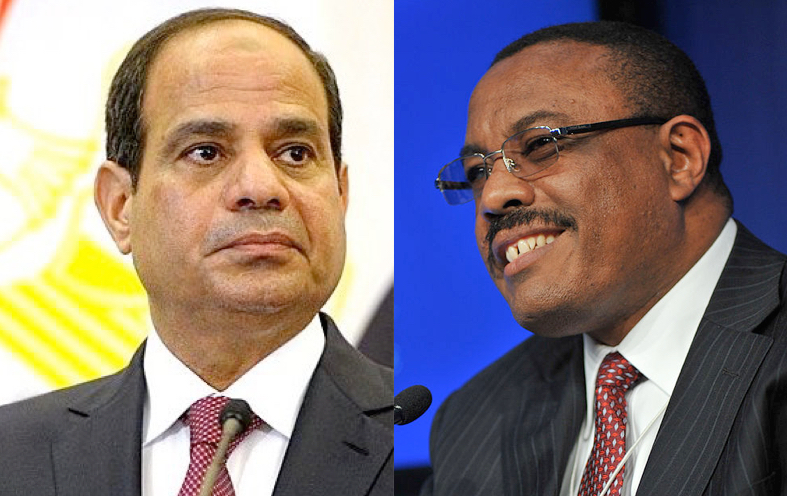$4B project is centrepiece of Ethiopia’s bid to become Africa’s biggest power exporter
Thomson Reuters · Posted: Jul 15, 2020
Egyptian President Abdel Fattah el-Sisi, right, is shown with Ethiopian Prime Minister Abiy Ahmed at the opening of an African Union assembly on Feb. 9. The two countries, along with Sudan, have been involved in protracted negotiations over the Grand Renaissance project. (Tiska Negeri/Reuters)
Ethiopia has started filling the Grand Renaissance dam, a giant hydroelectric project it is building on the Blue Nile, its water minister said on Wednesday, a day after talks with Sudan and Egypt on the issue became deadlocked.
“The construction of the dam and the filling of the water go hand in hand,” Seleshi Bekele said in televised comments. “The filling of the dam doesn’t need to wait until the completion of the dam.”
The water level had increased from 525 metres to 560 metres, he said.
Bekele did not address whether Ethiopia had closed the gates of the dam or the role of recent heavy rains in filling the area behind it.
Egypt asked Ethiopia for urgent clarification of whether it had started filling the dam, the Foreign Ministry said.
Sudan’s Ministry of Irrigation and Water Resources said it was prompted to investigate after satellite images appeared to show the dam filling.
“It was evident from the flow metre in the al-Deim border station with Ethiopia that there is a retreat in the water levels, equivalent to 90 million cubic metres per day, confirming the closure of the gates of the Renaissance Dam,” it said in a statement.
Sudan rejects any unilateral actions taken by any party as negotiating efforts continue, it said.
A handout satellite image shows a view of the Grand Ethiopian Renaissance Dam (GERD) and the Blue Nile River in Ethiopia on July 12. (Maxar Technologies/Reuters)
Tortuous, often acrimonious negotiations spanning close to a decade have left the three nations short of an agreement to regulate how Ethiopia will operate the dam and fill its reservoir, including talks on Tuesday.
The $4 billion US Grand Ethiopian Renaissance Dam will have an installed capacity of 6,450 megawatts — more than doubling its existing capacity — and is the centrepiece of Ethiopia’s bid to become Africa’s biggest power exporter.
But it has raised concerns in Cairo that already limited Nile waters, on which the Egyptian population of more than 100 million is almost entirely dependent, would be further restricted. Egypt gets 90 per cent of its fresh water from the Nile.
Needed for economic growth: Ethiopia
The Nile Basin river system flows through 11 countries. The Blue Nile and White Nile, its tributaries, merge in Sudan before flowing into Egypt and toward the Mediterranean. The dam is being built about 15 kilometres from the border with Sudan on the Blue Nile, source of most of the Nile’s waters.
Egypt has accused Ethiopia of not factoring in the risk of drought conditions such as those that affected the Nile Basin in the late 1970s and early 1980s.
Addis Ababa has countered by arguing Cairo is trying to hold the project hostage by imposing rules over the filling and operation of the dam.
Ethiopia had earlier said it would begin to use seasonal rains to fill the dam around this time. It has said the project is essential to its economic development, telling the United Nations Security Council in a letter last month it is designed “to help extricate our people from abject poverty.”
It has also said that while it could fill the reservoir in two to three years, it made a concession by proposing a four-to-seven-year process.





